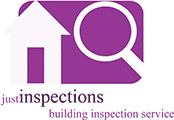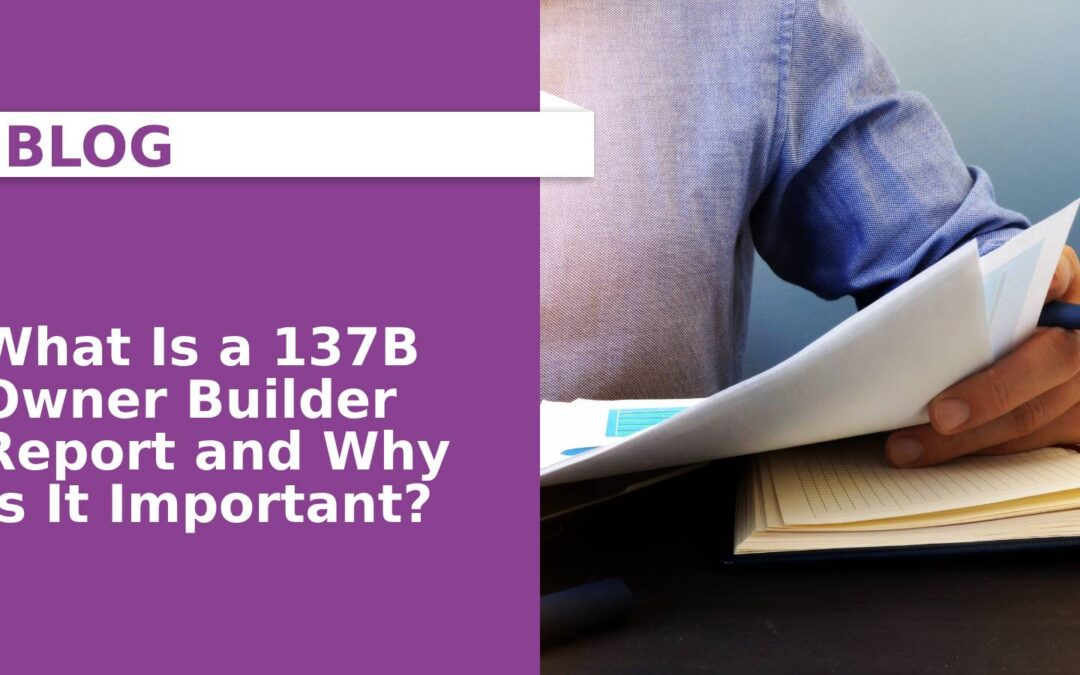Have you ever wondered why a 137B Owner Builder Report is needed when selling or buying a home? This report can be a game changer if you have built or renovated a property as an owner-builder. It helps spot any possible flaws, ensures the legalities are in order and gives everyone the peace of mind that the builder and buyer deserve.
Moreover, having this report before selling your property is legally required. So when exactly do you need it, and why is it so required?
In this guide, we’ll discuss what 137B Owner Builder Reports are and when a 137B Owner Builder Report is needed!
What Is 137B Owner Builder Reports?
In Australia, a homeowner who works on a property valued at more than $16,000 must submit a Section 137B Owner Builder Report. It is a declaration by the owner builder that the work has been completed by the relevant building regulations and standards.
In addition, the Section 137B Owner Builder Report allows you to avoid legal difficulties arising from your failure to comply. Hefty fines, remedial works or even demolitions could be involved in these cases.
Therefore, it generates confidence in all the stakeholders about construction or renovation work done on a property, as it must have followed the required guidelines and been as expected.
What Should I Include In My 137B Owner Builder Defects Report?
Reports listing defects in the building to include, but are not restricted to, conditions of the following building elements:
- Site drainage
- Footings
- Subfloor
- Frame
- External walls
- Internal walls and ceilings
- Floor and wall tiling
- External roof
- Internal roof conditions
- Built-in fittings/joinery
- Doors/windows
- Fireplaces/solid fuel heaters
- Plumbing and drainage
- Fixed appliances
- Flyscreens
- Paving, fencing, other structural work, swimming pools, and spas are constructed as part of a major domestic building contract, including driveways, paving, retaining walls, fencing, garages, carports, and workshops.
When Is A 137B Owner Builder Report Needed?
According to the Building Act (VIC) 1993, a Section 137B report is a condition of contract if the building works were completed within the past 6.5 years. Any defects in the building works must be disclosed by the vendor.
However, under VBA regulations, the owner-builder must disclose the following documents in Section 32 if he or she is selling an owner-built home completed within 6.5 years.
Report (137B Report) On Defects Inspection
The 137B report issued to the owner of an owner–built home less than 6 months from the sale date by the vendor shall be provided.
A Certificate of Currency for Domestic Building Insurance
If you undertook a building project that cost more than $16,000 and was done within 6.5 years (Obtaining the occupancy permit to the final inspection certificate being issued,). In that case, you have to get domestic building insurance.
This protects the purchaser in situations where the owner builders cannot be immediately accountable (e.g., if they died, disappeared or became insolvent). Still, the purchaser or his heirs will have some protection.
Why Do Owner–Builders Need Report 137B?
If you are an owner builder and you are selling, then getting a 137B report is mandatory – it is the law. Here’s why it’s important:
-
Follow Legal Compliance
Australian building laws require owner builders to sell within six years and six months after completing any work to provide a 137B report. Not skipping this step would cost you thousands of dollars in fines or legal battles that could stop the sale in its tracks.
-
Protects Buyers
When buyers have a professionally documented report of the property’s condition, they can be confident with their investment. It gives them assurance that you, the owner-builder, are open and honest about the property that they are buying (at some point in quality).
-
Prevents Post-Sale Disputes
If problems occur after the sale and the buyer isn’t told ahead of time, they can sue you. This risk is minimised by a 137B report that discloses all defects upfront.
-
Improves Marketability
A defect report puts your property in a good light for buyers. This demonstrates that you are willing to comply with the necessity, which will most likely place you on the plus side of the sellers who struggle with such guidelines.
Who Prepares a 137B Report?
A qualified professional is the only one who can prepare a 137B report. Usually, this is a licensed building inspector or someone of similar credentials.
When choosing an inspector:
- Make sure that your local building authority accredits them.
- Look for professionals with lots of experience working with owner builder properties.
- Ask for references, check reviews, and even ask to see examples of previous reports.
- Incomplete or inaccurate reports from an unqualified inspector may be a problem during the sale.
How Do They Conduct an Inspection?
There are a number of detailed steps in preparing the 137B report to ensure the property meets the safety and construction standards. Here’s how the inspection is usually conducted:
1. Pre-Inspection Consultation
The inspector may ask for all the important details about the property before the on site visit. These may include:
- Construction plans and permits: To make sure that the building complies with the design approved and local regulations.
- Warranties: Guarantees made by building materials or systems may be reviewed to determine whether or not there are any claims or liability potential.
- Prior reports or documentation: They may evaluate past inspections or maintenance records in order to understand the property’s history.
The reason for this step is to make sure the inspector knows everything there is to know about the property before they begin their job.
2. On-Site Inspection
It is the inspector himself who creates a thorough physical examination of the property, looking for defects, unfinished work or safety hazards. Key areas which are being inspected include:
- Interior elements: Cracks, uneven floors and ceilings, improper installations, and damage to walls, floors, ceilings, windows and doors are inspected.
- Electrical systems: They inspect functionality, compliance and safety risks for functionality, compliance, safety risks of outlets, wiring, circuit breakers, and appliances.
- Plumbing systems: The operation and potential leaks of pipes, fixtures, water pressure and drainage are assessed.
- Exterior features: Inspect roofing, gutters, downpipes and any other drainage system to check for structural integrity. Moreover, weatherproofing is also checked to see whether water flows as it should.
- Foundation and structural elements: First, they will see what the issues are with settling base cracks.
The inspector will also indicate any potential hazards or risks to the property’s long term value or the occupants.
3. Documentation
During the inspection, detailed notes, measurements and high resolution photographs are taken. This document is a clear and objective record of the condition of the property. Furthermore, specific problem areas and their location and severity are recorded to support our findings.
4. Report Compilation
After the on-site inspection, the inspector will prepare a formal 137B report of findings. This document includes:
- Descriptions of observed issues: The details of each defect or concern, how it might affect the system, or both are described.
- Photographic evidence: The findings are visually supported by including images.
- Recommendations: Where necessary, the inspector provides suggestions for repairs, corrections, or further assessments in concrete suggestions.
- Compliance verification: Review of whether the property, in all aspects, meets those relevant building codes and standards.
Finally, the finalised report will be an important tool for the property owner, builder or contractor to identify the evidence of deficiency and close the gaps to bring the property up to the required standards.
What Are Common Defects Found in 137B Report?
Some of the most frequently identified defects include:
-
Structural Issues
A common structural problem they may be dealing with is cracks in walls, sinking foundations or sagging roofs, which may determine the property’s safety and stability.
-
Water Damage
When you don’t address the problem, leaking roofs, damp walls, and poor drainage systems can cause mold growth and long term damage.
-
Faulty Electrical and Plumbing works.
Wiring issues that are non-compliant, faulty outlets, and leaking pipes are some of the issues that appear in defect reports.
-
Inadequate Finishes
This could include uneven tile, peeling paint, or bad install fixtures. Although these may sometimes seem like minor issues, that doesn’t matter as they can have a big impact on the property’s appeal.
How Can You Sell Without a 137B Report?
No, selling without a 137B report is illegal in many states, leaving you open to big risks. Plus, you lose the asset if it comes down to it. Without this report:
- You could be penalised or fined.
- They could withdraw from the purchase or demand considerable reductions to the price.
- Without disclosing, you could be hit with a lawsuit that will cost you time and money.
How Just Inspections Can Help with 137B Owner Builder Reports
At Just Inspections, we understand how stressful selling a property can be, especially with the legal requirements around 137B Owner Builder Reports. That’s why we’re here to make the process as easy as possible for you.
Here’s how we can help:
- Qualified and Experienced Inspectors: Our team includes licensed engineers who follow Australian Standards (AS 4349.1). You can trust that your report will be done right the first time, with no shortcuts.
- Detailed Inspections: We go beyond the basics, checking everything from decks, fences, and retaining walls to kitchen or bathroom renovations. We’ll identify any defects, non-compliance issues, or potential risks.
- Clear Guidance: Legislation can be tricky, but we’ll walk you through it step by step. Need help with warranty insurance? We can assist with that too, so you’re covered from all angles.
- Quick Turnaround: Time is often critical in property sales. We’ll get your inspection and report completed promptly to avoid unnecessary delays.
- Trusted Local Experts: With over 30 years of experience in Melbourne and Geelong, we’ve built a solid reputation for providing reliable and professional inspection services.
Selling a property doesn’t have to be complicated. Let us handle your 137B Owner Builder Report so you can focus on the next chapter of your journey.
Final Words
If an owner builder has built or renovated your property, knowing what is a 137B builder reports is important because this document lists any defects or issues in that property. This report ensures builders comply with building regulations and gives buyers and sellers an honest, clear view of the property’s condition. For owner-builders or buyers, defect reports represent a small investment that can save you a major headache.

